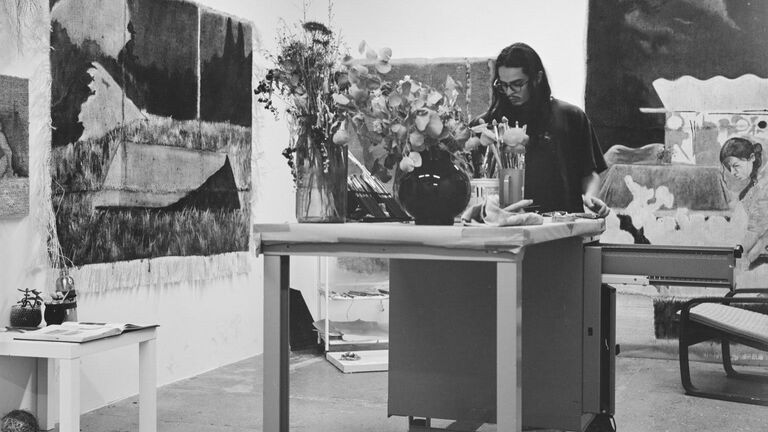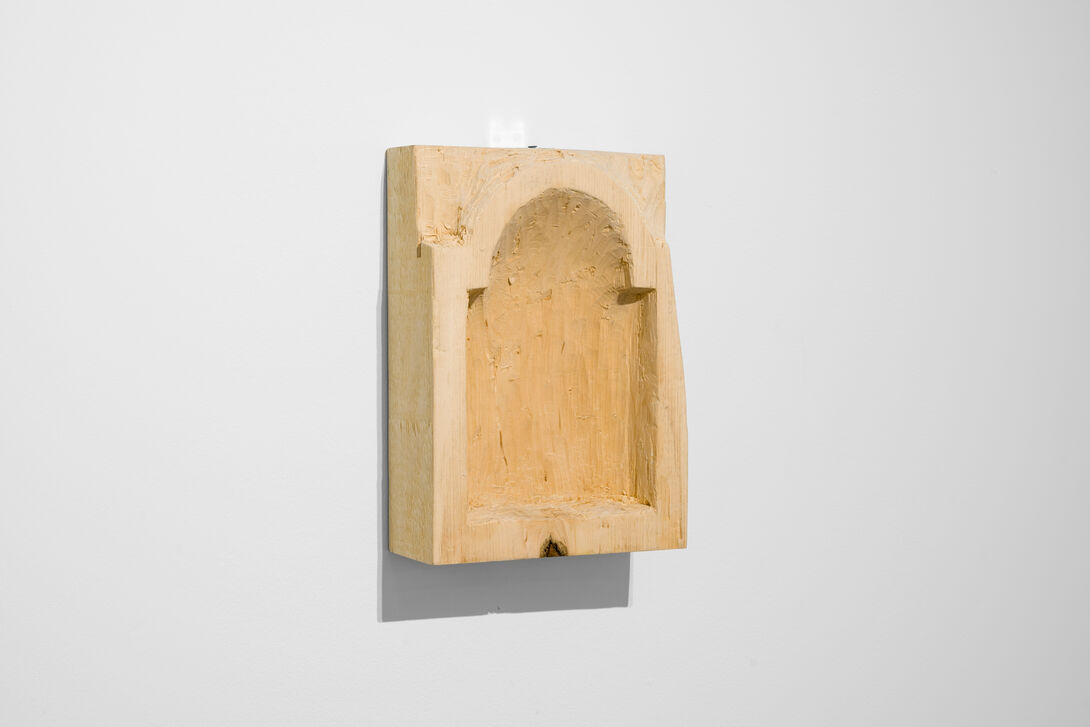
Juan David Ruiz Borbón
How It’s Made: U, Empty Vessel by Pedro Montilla Pineros
The water came quietly at first—a slow seep through the basement studio's concrete walls. Then all at once, a deluge. By morning, School of the Art Institute of Chicago (SAIC) student Pedro Montilla Pineros’ pieces floated like driftwood, his colors bleeding into the water. But after the cleanup came a surprise: the loss made way for something new. After the flood, Pineros paused his painting practice, leading to a profound exploration of new mediums—including scent—and a reimagining of what his art can be.
Pineros’ U, Empty Vessel is a shrine carved from absence. A wooden cavity the size of a cupped palm, its interior is steeped in the scent of petrichor and wet concrete—the very smell of that flooded studio, of earth after rain, of memory refusing to fade. Pineros’ art no longer lived on fabric, but in the air between things.
Born in the Colombian Andes, Pineros’s practice is deeply rooted in the tension between image and object-hood, as well as the sacred presence of materials. Here, Pineros discusses blending boundaries, the creation of U, Empty Vessel, and the sensory experiences that bind us together.

Jonas Mikosch
What inspired U, Empty Vessel?
For me, this is a very special piece because, during last winter, my studio was flooded. Because of that, I lost a big part of the material that I paint on that is very core to my practice. It opened opportunities to try to do my practice in other languages and other mediums. It also overlapped with a moment of feeling of grief and emptiness and, yeah, being pierced by sadness too.
What is the shrine, and how was it created?
The shrine would have an olfactory shelf... an empty shrine that had an olfactory landscape within. I proposed carving it directly into the wall of the gallery, but the School didn’t allow me to do that. So, that directed the gesture to create this wooden device that could move. I sprayed the inside part of the shrine so that it keeps the scent fresh. I didn’t want to make a point on, “Oh, look, I did a scent.” But then the scent [became] an invisible presence that wrapped up the Graduate Exhibition almost in an unconscious way.
How did the Olfactory Arts class influence the piece?
I decided to take Lecturer Tedd Neenan’s Olfactory Arts class. It was very revealing for me because it had a lot of parallels in the way that painting works and operates, that appeals a lot to memory. Scents are very attached to memory within the brain. It was also a way for me to explore landscaping in a nonvisual way. I developed a perfume in the class that had the scent of petrichor, and of concrete, and of moss, and dirt. I come from the Colombian Andes, from the mountains, so that was also a way for me to summon home out of nothing.
What does the scent represent in the piece?
The olfactory things, scents, live under that emptiness. The space between things and between people and between animals and between humans … that emptiness, it’s both what separates us and what unites us.

Jonas Mikosch
What does U, Empty Vessel mean to you?
The shrine is a way to explore the presence of things and objects, which has a sacred aspect for me. The piece became a big opportunity for me to start exploring other types of languages or types of marks. It’s a way to understand the experience of being alive and surrounded by life.
How do you see the piece evolving?
I don’t see this piece as something that is solved completely yet. The format of the grad show was very good to understand the process and the practice as an ongoing thing. Those cracks being the space for other viewers to make their own interpretation of what they’re witnessing.

Jonas Mikosch
